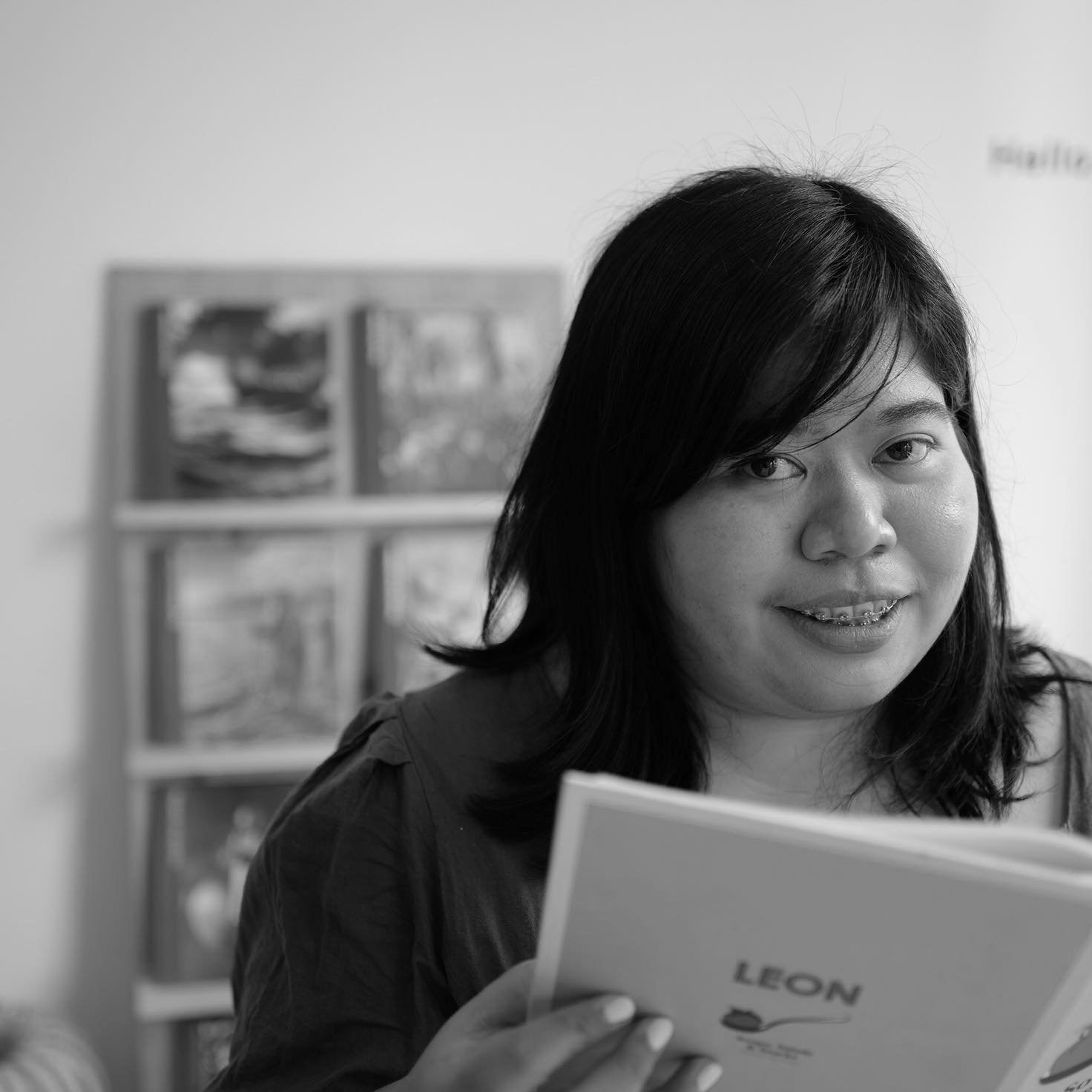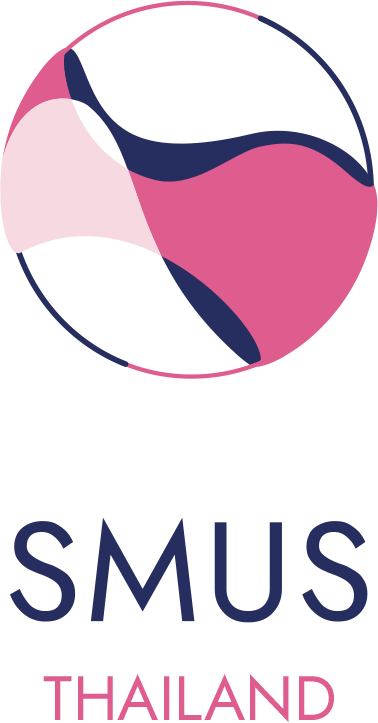Our team members :
-

จักรกริช สังขมณี
Urban Climates and Micro-Ecologies of Speculative Infrastructures
Bangkok is witnessing numerous climate-related changes. And they pose questions about the resilience and vulnerability of the city. My research seeks to understand the relations between urban microclimate regimes, the perceptions of city people, and their actions in anticipating and responding to the effects of climate change, ranging from mundane to speculative engagement.
I use Benjakitti Forest Park, a recently opened rewilding project in the heart of Bangkok, as a portal to understand urban concerns and the city's anticipated future. The park's design is innovative in that it deals with unsettling ecology, spatial resilience, social and climatic challenges, as well as the unorthodoxy of urban middle-class aesthetics. This "ecological infrastructure" can be viewed as a speculative attempt to live and become with the city's perennial flooding, waste water, urban heat island, the lack of animal habitat, polluted air, limited recreational space, and the challenges of excess materials from urban gentrification.
Unlike managed green space like public parks that maintain a static appearance from the time of construction, rewilding urban landscapes are ever-changing organic assemblages that allow multi-species to develop, flourish, interact, and sometimes disappear. In addition to being a public space for human recreation, there are also many "infra" structures beneath the surface that perform functions beyond human perception and sensitivity.
-

วาสนา ศรีจำปา
อาหารของคนเมือง : การทำความเข้าใจสภาวะเปราะบางของกรุงเทพมหานครผ่านอาหาร
ความเป็นเมืองในสังคมสมัยใหม่ (modern urbanity) มีสภาวะเปราะบาง (precarity) ที่หลากหลาย โดยความเปราะบางดังกล่าวเกิดจากบริบทของความเป็นเมืองที่ดำรงซ้อนทับกันอยู่ในหลายมิติ เช่น มิติเชิงกายภาพ มิติเชิงสังคมวัฒนธรรม มิติทางเศรษฐกิจ และมิติทางด้านคุณค่า ทั้งนี้ สภาวะเปราะบางของความเป็นเมืองสามารถทำความเข้าใจได้จาก การพิจารณาความสัมพันธ์ระหว่างสถานการณ์อาหารในเมืองกับผู้คนที่อยู่อาศัย ซึ่งเกิดขึ้นในรูปแบบที่หลากหลาย
การศึกษาครั้งนี้เลือกศึกษาความสัมพันธ์ดังกล่าวผ่านการติดตาม (trace) สถานการณ์อาหารของกลุ่มผู้คน 4 กลุ่ม คือ สถานการณ์อาหารของคนที่ดำรงชีวิตอยู่บนพื้นที่ทางเศรษฐกิจที่มีความไม่มั่นคง (แรงงานรับจ้างทั่วไป) สถานการณ์อาหารของคนที่ดำรงชีวิตอยู่ในพื้นที่กายภาพแบบสำนักงาน (พนักงานออฟฟิศ) สถานการณ์อาหารของคนที่ดำรงชีวิตอยู่ท่ามกลางเงื่อนไขด้านความเชื่อและวัฒนธรรม (พระสงฆ์) และสถานการณ์อาหารของคนที่สมาทานค่านิยมชนชั้นกลางที่ใส่ใจสุขภาพ (คนกินคลีน)
โดยการศึกษาครั้งนี้เชื่อว่า การติดตามทำความเข้าใจสถานการณ์ของอาหารในแง่ของการไหลเวียนของวัตถุ (material flows) กับผู้คนในเมือง จะทำให้เห็นภาพของบริบทความเป็นเมืองและสภาวะของความเปราะบางดังกล่าวได้ การศึกษาครั้งนี้ จึงเป็นการศึกษาพื้นที่ (spatiality) ของความเป็นเมือง ผ่านการทำความเข้าใจการไหลเวียนของวัตถุสภาวะ (materiality) ของอาหาร
-

ปิยเทพ ตันมหาสมุทร
การอยู่อาศัยในสภาวะวิกฤต: ความหนืดพรุนและการประกอบร่วมของบ้าน-เมืองในกรุงเทพมหานคร
งานศึกษาชิ้นนี้พิจารณาความสัมพันธ์ระหว่างมนุษย์ พื้นที่ของการอยู่อาศัย (บ้านและเมือง) และเชื้อโรค (โควิด-19) ในฐานะกระบวนการประกอบร่วมเชิงภววิทยาในช่วงเวลาของการแพร่ระบาด ซึ่งอาจสะท้อนให้เห็นถึงความเปราะบางในการควบคุมจัดการและอยู่ร่วมกับโควิด-19 และการอยู่อาศัยในเมือง
ในการทำความเข้าใจกระบวนการดังกล่าว ผู้ศึกษาได้นำแนวคิดการประกอบร่วมของเมือง (Urban Assemblage) โดย Colin McFarlane (2011) มาใช้อธิบายสภาวะการประกอบร่วมของที่อยู่อาศัยในกรุงเทพฯ ซึ่งเผชิญกับสถานการณ์การแพร่ระบาดของโรคโควิด 19 ที่ทำให้ที่อยู่อาศัยต้องปรับเปลี่ยนให้สอดคล้องตามนโยบายของภาครัฐที่ต้องการควบคุมการระบาดของโควิด-19 รวมไปถึงการกลายเป็นสถานที่ของการกักตัวควบคุมผู้ติดเชื้อ
นอกจากนี้ ผู้ศึกษายังได้นำแนวคิดเรื่องความพรุน/ ปรุโปร่ง (porosity) ของพื้นที่อยู่อาศัยและของสมาชิกในพื้นที่อยู่อาศัยแบบต่างๆ ในช่วงที่ผู้อาศัยเผชิญกับสภาวการณ์การเว้นระยะห่างทางสังคม กำแพงของบ้านที่แม้จะทำหน้าที่ปกป้องผู้อาศัยจากการแพร่ระบาดของเชื้อโควิด-19 แต่มนุษย์มักมีการเคลื่อนย้ายเข้า-ออกพื้นที่บ้าน รวมถึงวัตถุที่อาจนำพาเชื้อโควิด-19 เข้ามายังบ้านได้ แนวคิดความพรุน/ ปรุโปร่งจะช่วยในการทำความเข้าใจการไหลข้ามของพื้นที่และข้อจำกัดของการพิจารณาพื้นที่ทางกายภาพที่แยกขาดจากการเคลื่อนย้ายไหลเวียนของมนุษย์และสิ่งที่ไม่ใช่มนุษย์
-

วีรเศรษฐ ริ้วทอง
สภาวะดุร้ายของหลุมฝังกลบขยะ: กรณีศึกษาหลุมฝังกลบขยะในกรุงเทพมหานครและสมุทรปราการ
การวิจัยนี้อาศัยแนวคิดของมิเชล ฟูโกต์ (Michel Foucault) ว่าด้วยการปกครองเหนือชีวิต (Governmentality) และแนวคิดพื้นที่ซ่อนเร้น (Heterotropia space) กับแนวคิดที่พิจารณาการเปลี่ยนแปลงในระดับภววิทยาแบบระนาบ (flat ontology) คือแนวคิดวัตถุนิยมใหม่ (New Materialism) ผู้วิจัยอาศัยแนวคิดทั้ง 3 นี้เป็นกรอบเพื่ออธิบายความสัมพันธ์ระหว่างมนุษย์กับสิ่งที่ไม่ใช่มนุษย์ที่ตัดข้ามกันไปมาในภูมิทัศน์ของหลุมฝังกลบขยะ แนวคิดของฟูโกต์มุ่งเน้นปฏิบัติการของมนุษย์ (humans agency) ท่ามกลางอำนาจและความรู้ที่เข้ามาจัดการกับหลุมฝังกลบขยะ ขณะเดียวกันแนวคิดวัตถุนิยมใหม่หยิบยื่นโอกาสการทำความเข้าใจปฏิบัติการของสิ่งที่ไม่ใช่มนุษย์ (nonhumans agency) ในบริบทของมนุษยสมัยด้วยเช่นกันผู้วิจัยจึงเห็นว่าหลุมฝังกลบขยะเป็นความสัมพันธ์ที่มีอำนาจของมนุษย์ไปพร้อมกับภววิทยาเชิงระนาบ หรือกล่าวอีกนัยหนึ่งคือมนุษย์มีอำนาจปฏิบัติการต่อหลุมฝังกลบขยะ แต่ภายใต้ภูมิทัศน์ (landscapes) ที่มีการจัดการมีความสัมพันธ์แบบพ้นมนุษย์ที่ปรากฎ feral effects ของวัตถุภาวะที่มนุษย์ควบคุมไม่ได้ นอกจากผลกระทบทางสิ่งแวดล้อม หลุมฝังกลบขยะยังมาพร้อมกับความไม่เท่าเทียมทางสิ่งแวดล้อมและสังคมด้วยเช่นกัน ผู้เขียนนำแนวคิดที่มีความต่างในระดับภววิทยาและญาณวิทยาเข้ามาเป็นระบบเชิงวิธีคิดทางทฤษฎีที่ใช้ทำความเข้าใจถึงความหย่อมย่าน (patchy) ของมนุษยสมัยมากขึ้น
Ongoing Research Projects:
The Mystery of the Almost Disappearing Naga
On Urbanization and Cosmopolitics in Bangkok
This research project explores the precarious persistence of the naga, a more-than-mythic serpent, amidst the rapidly evolving urban landscape of Bangkok, Thailand. Drawing upon the concepts of cosmopolitics, more-than-human ecology, and urban politics, I argue that the naga’s enduring presence in Bangkok serves as an ontological reflection of the city’s complex interplay of forces, including rural-to-urban migration, capitalist expansion, environmental degradation, and political struggles. The study introduces the concept of the Nagacene, a hybridized framing that blends the Chthulucene’s emphasis on entangled human-environment relations with the Capitalocene’s critique of capitalist expansion, to illuminate the lived realities of rural-urban migrants from Thailand’s Isan region in the cosmopolitan spaces of Bangkok. By examining the naga’s cosmoecological significance in various urban spaces, the article highlights how the mythical serpent embodies the aspirations, challenges, and transformations of Bangkok’s marginalized communities. The study concludes by envisioning a cosmopolitical future for Bangkok, one that accommodates diverse modes of existence and reconfigures the city’s uneven assemblages to achieve greater recognition, acceptance, and coexistence for all its inhabitants, both human and more-than-human.
Speculature
Dreaming the Delta in a Drowning Bangkok
This research explores the Pearl Necklace Project, a state-initiated megaproject proposing a chain of artificial islands and floodgates in the Gulf of Thailand to shield Bangkok from rising seas and coastal erosion. Billed as a visionary act of climate adaptation, the project does not merely engineer the future—it dreams it. Through a combination of state imaginary, technical renderings, economic futurism, and planetary-scale ambition, the project materializes what I call speculature, the entanglement of speculation and infrastructure in the dealing with uncertain futures.
I argue that speculature is a genre of future-making—half-material, half-imagined—that performs techno-political desire in the midst of planetary precarity. From feasibility studies to shoreline makeshift, from master plans to waterlogged gossip, speculature blends concrete and affect, climate data and cosmology. In this research, I examine how speculature operates not only through top-down urban visioning but also through the vernacular speculations of residents in erosion-prone communities in Bang Khun Thian, the coastal fringes of Bangkok. These are the voices of those who anticipate, adapt, and resist through alternative rhythms, hopes, and fears.
Framing my ethnographic encounter through the narrative sensibility of climate fabulation, I suggest that Bangkok’s infrastructural futures are best understood not through predictive models but through layered, leaking, and affectively charged imaginaries. The project is haunted by its pasts and futures—both submerged and spectral, an attempt to stabilize a city already dissolving into dream, sediment, and speculation. The coastal edge I study is thick with time—layered with ruins, rumors, and renderings of what is yet to come. In a city already haunted by water, infrastructure becomes both a flood barrier and a speculative fiction. Speculature thus offers a conceptual tool to analyze how ecological crisis becomes governable not just through technology, but through aesthetics, anticipation, and storytelling.
Ultimately, this research seeks to reorient speculative anthropology away from probabilistic models and toward ethnographic worldings, where imagination, infrastructure, and deltaic materiality co-compose uncertain futures in Bangkok’s watery Anthropocene. Through the echoing voices of planners and villagers, my ethnography moves between these pluriversal grammars of speculations, searching for meaning in their drift.
MultipliCity Anthropology Research Lab is in partnership with The Global Center of Spatial Methods for Urban Sustainability (SMUS) through SMUS Thailand



